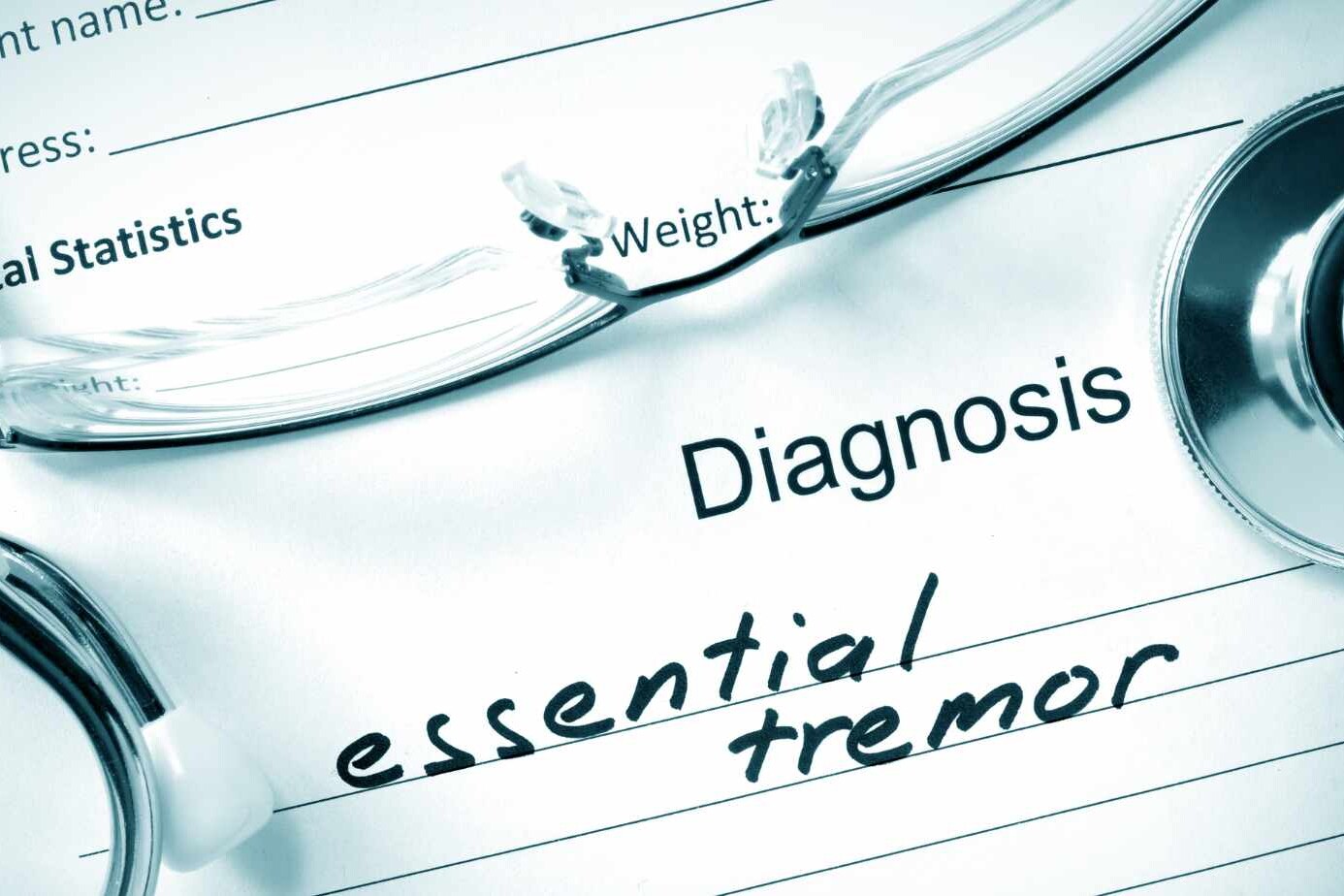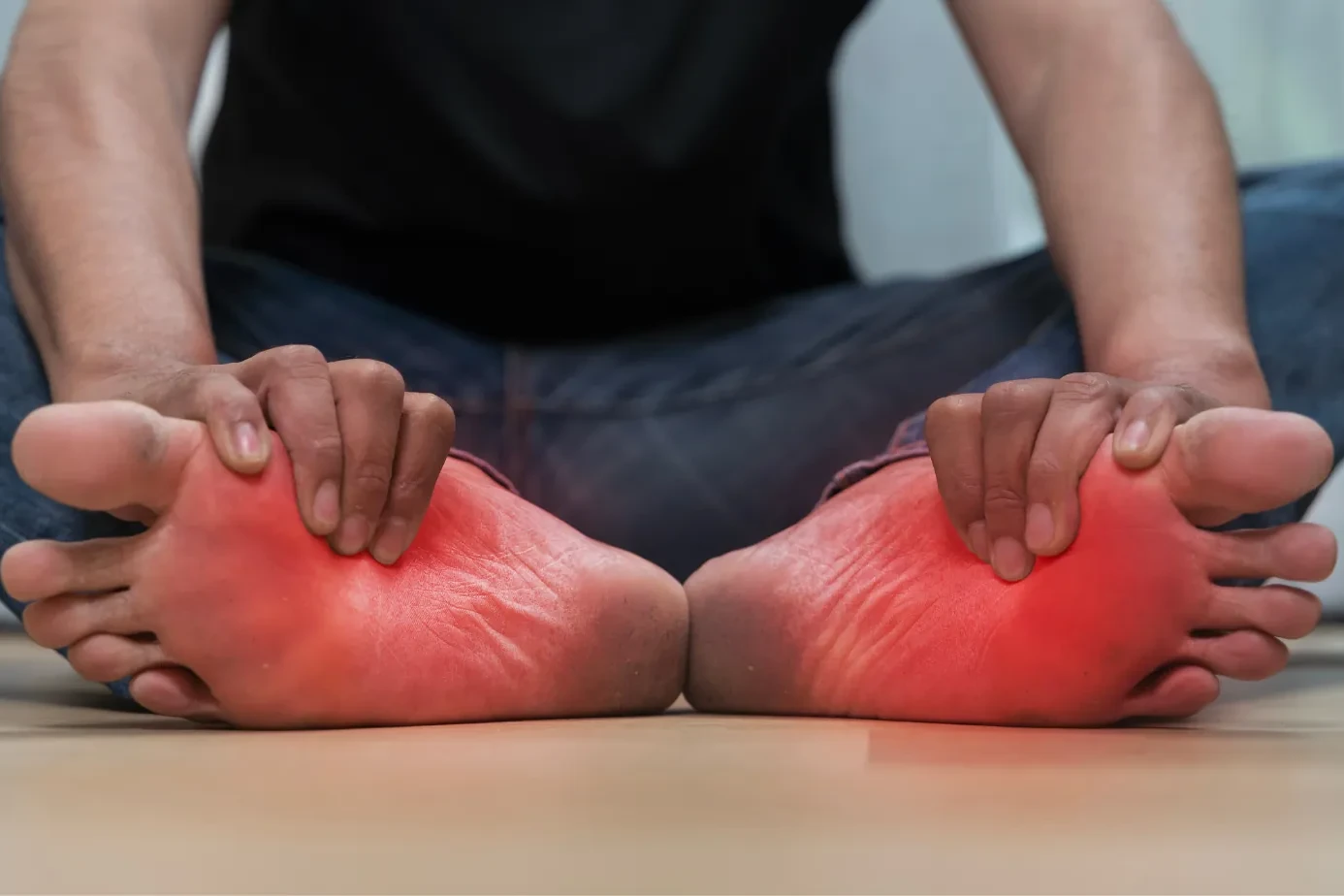Table of Contents
ToggleEssential Tremor Symptoms: Recognizing the Signs
Essential tremor is a type of movement disorder. It makes parts of your body shake without you wanting them to. This might happen to your hands, head, or jaw. It affects about 10 million people in the United States. Mainly the hands shake, but the head and other body parts can too, up 10% of the time. This shaking happens by itself, without other problems like memory loss. It’s not the same as Parkinson’s disease, even though both can cause body shakes.
Shaking, especially in the hands, is the main sign of essential tremor. Over time, this shake can get worse. This makes some daily tasks hard, like holding a glass, doing up shoelaces, or writing. Not just the hands, but the head, voice, and other parts of the body can also shake.

What is Essential Tremor?
Essential tremor (ET) makes people shake without wanting to. It mostly affects hands, heads, or voices. The reason behind essential tremor is not fully understood.
The problem likely lies in how nerves talk to muscles. Some people might inherit a tendency to get essential tremor. However, we’re not entirely sure.
Causes and Risk Factors
As you grow older, the risk of having essential tremor goes up. Still, even kids can get it. It might be tied to conditions like Parkinson’s or hearing loss, especially seen in those over 65.
Difference from Parkinson’s Disease
Both essential tremor and Parkinson’s cause shaking. A key difference is essential tremor’s shakes affect both sides. But Parkinsons Disease usually starts on one side. Also, essential tremor doesn’t come with the same slow movements and balance troubles as Parkinson’s.
Prevalence of Essential Tremor
Who Does It Affect?
Essential tremor can happen to anyone. It becomes more common with age. The first signs might appear between ages 10 and 19, or from 50 to 59.
Sometimes, it runs in families. People also call it “familial tremor.” It can start early in life, affecting children too. But, the chances of getting it grow as you get older.
How Common Is It?
About 1% of the world’s population has essential tremor. Over 60, about 5% are affected. It’s the most common type of tremor.
Essential tremor makes tasks like writing or drinking harder. This can really change how someone lives their life.
Essential Tremor Symptoms
Essential tremor is a condition that makes you shake without meaning to, mostly in the hands and arms. The shaking is the main symptom and it happens in a regular way. You might shake up-and-down or side-to-side. This shaking can affect both sides of your body, showing more on one side.
Trembling Hands and Arms
Essential tremor often starts with your hands and arms shaking. This happens especially when you’re using your hands for things like writing or holding a glass. But, your hands are still when you’re not using them.
Head, Voice, and Body Tremors
Sometimes, the shaking can spread to your head, voice, and other body parts. These tremors may get in the way of talking, swallowing, or moving certain muscles. It can make daily activities harder.
Progressive Nature of Symptoms
Essential tremor gets worse over time. The more severe the shaking, the harder it is to do simple things like hold a cup or eat. This can really affect how you live your life and your ability to do things on your own.
Types of Tremors
Tremor types are based on how they start and what makes them happen. Rest tremors show up when you’re not moving, like in Parkinson’s. Action tremors happen when you’re doing things, and they have different kinds.
Rest Tremor vs. Action Tremor
A rest tremor happens in Parkinson’s. The body part shakes even when you’re not using it. An action tremor appears when you try to do something, like holding a cup.
There are two types of action tremors. One’s called postural, and it shows up when you’re keeping your arms still. The other is kinetic, and you see it when you’re moving, like picking something up.
Intention and Task-Specific Tremors
Intention tremors get worse as you aim for something, like touching your nose. Task-specific tremors only show up when you’re doing a certain thing, such as playing music or using tools.
Tremor Syndromes
Tremor syndromes are known by their unique patterns and traits. Types include essential tremor, dystonic tremors, cerebellar tremors, functional tremors, and physiologic tremors.
Essential Tremor Syndrome
Essential tremor syndrome is the most common, seen in about 10 million Americans. It leads to a shaking that’s hard to control, mainly in the hands, head, or voice. It runs in families and can start at any age, but often after 40.
Dystonic and Cerebellar Tremors
Dystonic tremors come with a condition called dystonia. This makes muscles move and twist on their own. They might happen when someone’s doing specific actions. Cerebellar tremors come from a damaged cerebellum, causing shakes during focused movements.
Functional and Physiologic Tremors
Functional tremors are linked to emotions, not brain problems. They can look like other tremors but don’t signal a disease. Physiologic tremors are mild shakes most people have. They can get worse with stress, tiredness, or certain drugs.

Diagnosis and Evaluation
Diagnosing essential tremor starts with a chat with your healthcare provider. They will ask about your past health, family health, and symptoms. A physical exam is next to check your tremor’s features and how strong it is.
Physical Examination
During the exam, your provider might have you do some tasks. These could be things like pouring water or writing. This helps them see the tremor’s type and strength.
Your muscle power, reflexes, standing, how you move, and coordination are also checked. This is to see if there are any hidden nerve issues.
Ruling Out Other Conditions
To confirm essential tremor, other health problems with similar signs need ruling out. Your provider might do blood tests or order an MRI to make sure. This detailed process leads to the right diagnosis and treatment.
Assessing Tremor Severity
After all the tests, your healthcare team will know your tremor’s type and how strong it is. This info is key for creating a treatment just for you. Understanding the factors affecting your tremor’s severity helps in finding the best way to manage it.
Treatment Options
If your essential tremor symptoms are mild, you might not need treatment. But, if it makes daily life hard, your doctor can suggest different treatments. They aim to help you handle your essential tremor.
Medications for Tremor Management
Often, doctors start with medications for essential tremor. They could give you beta-adrenergic blockers or anti-seizure drugs. These can lessen how strong your tremors are. For some, Botox injections might work well too.
Deep Brain Stimulation
If medicines don’t work or have bad side effects, surgery might be the answer. One option is deep brain stimulation (DBS). It uses a small device to send electric signals to the brain. This can help lower the tremors.
Thalamotomy and Other Surgeries
Another surgery option is a focused ultrasound thalamotomy. It’s a non-invasive procedure that makes a small lesion in the thalamus using sound waves. Sometimes, traditional thalamotomy might also be on the table.
Alongside medicine and surgery, lifestyle changes help with essential tremor. These include not drinking too much caffeine or alcohol, and learning to relax. Also, working with a therapist can improve muscle control.
Conclusion
Essential tremor is a common problem that makes people shake involuntarily. It mostly affects the hands and arms. The exact reasons behind it are not fully known. But, it seems to be linked to both genes and problems with how nerves talk to muscles. This issue can get worse over time, which makes daily activities harder for those with it.
Even though it can be challenging, there are ways to treat essential tremor. Medicine, deep brain stimulation, and therapy can all be helpful. It’s important to talk to a doctor to see what might work best for you. By learning more about treatment for essential tremor, you can better deal with its effects and stay healthy and independent.
This wraps up what we’ve learned about essential tremor. It stresses that many people have it and that there’s hope with treatment. Recognizing its steady nature and the value of good medical care is key. This section sums up the main ideas shared earlier and gives readers a good view of this health issue.
FAQ
What is essential tremor?
Essential tremor makes parts of the body shake without control. It often affects the hands, head, or jaw. About 10 million people in the United States have it. It’s the most common kind of movement disorder.
What are the causes and risk factors of essential tremor?
The main cause of essential tremor is still unknown. But, it may be linked to genes and nerve-muscle communication issues. It’s more likely as we get older, but even children can get it.
How is essential tremor different from Parkinson’s disease?
Essential tremor shakes both sides of the body, while Parkinson’s starts on one side. Also, essential tremor lacks other Parkinson’s symptoms.
Who does essential tremor affect?
Anyone can get essential tremor, but it’s more common with age. It often starts between 10-19 or 50-59. It sometimes runs in families and is known as “familial tremor.”
How common is essential tremor?
About 1% of the world has essential tremor, and 5% of those over 60. It’s very common among tremors and movement disorders.
What are the main symptoms of essential tremor?
Essential tremor’s mains sign are uncontrollable shakes, especially in the hands. The shaking follows a rhythm, moving up-down or side-to-side. It can also affect the head, voice, and more.
How are different types of tremors categorized?
Doctors separate tremors by when they happen and their cause. Rest tremor is when you’re not moving and links to Parkinson’s. Action tremors come with movement and have types like postural and kinetic.
What are some common tremor syndromes?
Common tremor syndromes include essential tremor, dystonic tremors, cerebellar tremors, and more.
How is essential tremor diagnosed?
There’s no single test for essential tremor. A doctor checks your symptoms, history, and does an exam. They might do tests to rule out other issues.
What are the treatment options for essential tremor?
Mild tremors may need no treatment. But for severe symptoms, doctors may suggest medicine, surgery, or physical therapy.
Source Links
- https://emedicine.medscape.com/article/1150290-overview
- https://lluh.org/conditions/essential-tremor
- https://www.hopkinsmedicine.org/health/conditions-and-diseases/essential-tremor-disorder
- https://www.mayoclinic.org/diseases-conditions/essential-tremor/symptoms-causes/syc-20350534
- https://www.ncbi.nlm.nih.gov/pmc/articles/PMC8035980/
- https://www.ncbi.nlm.nih.gov/pmc/articles/PMC8269764/
- https://www.cuimc.columbia.edu/news/essential-tremor-affects-millions-few-know-treatment-options
- https://www.hopkinsmedicine.org/neurology-neurosurgery/specialty-areas/movement-disorders/essential-tremor
- https://www.ncbi.nlm.nih.gov/books/NBK499986/
About The Author

This article is medically reviewed by Dr. Chandril Chugh, Board-Certified Neurologist, providing expert insights and reliable health information.
Dr. Chandril Chugh is a U.S.-trained neurologist with over a decade of experience. Known for his compassionate care, he specializes in treating neurological conditions such as migraines, epilepsy, and Parkinson’s disease. Dr. Chugh is highly regarded for his patient-centered approach and dedication to providing personalized care.
→ Book a consultation to discover which remedies suit your needs best.





